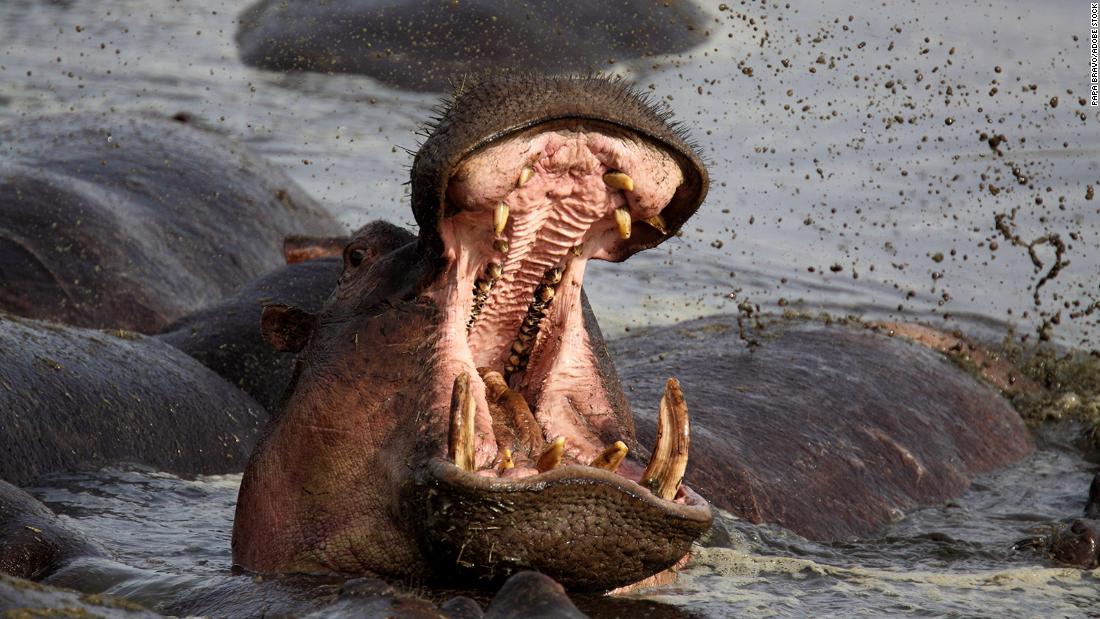
'I was up to my waist down a hippo's throat.' He survived, and here's his advice
Paul Templer was living his best life.

Paul Templer was living his best life.
Templer's encounter with a hippo serves as a stark reminder of the potential dangers that lurk in the wild, even when one is immersed in the beauty of nature. The incident occurred in Zimbabwe, where Templer, a veteran safari guide, was leading a group of tourists when he found himself unexpectedly in the mouth of a hippo. This terrifying experience has not only changed his perspective on wildlife but has also equipped him with invaluable insights on how to stay safe in environments where such animals roam.
Hippos, despite their seemingly docile appearance, are considered one of the most dangerous animals in Africa. They are responsible for an estimated 500 deaths each year, more than any other large animal on the continent. Templer’s survival of the attack highlights the inherent risks associated with wildlife tourism and the importance of understanding animal behavior. He emphasizes that while hippos are herbivorous, they can be extremely territorial, especially when they feel threatened. This is particularly true during the breeding season when they are more aggressive.
According to Templer, recognizing the signs of hippo aggression can be crucial for safety. Hippos often become aggressive if they perceive a threat to their young or territory. They are known to charge at perceived threats, and their massive size and strength can be lethal. Templer advises anyone venturing into hippo territory to maintain a safe distance and to be aware of their surroundings, especially near water bodies where hippos are likely to be present.
In recounting his experience, Templer describes the sheer power of the hippo and the surreal moment when he found himself in such a precarious position. He credits his survival to a combination of quick thinking and a bit of luck. Templer was able to wriggle free from the animal’s grasp, but the physical and emotional scars from the encounter remain. His story serves as a cautionary tale for tourists and guides alike, underscoring the unpredictable nature of wildlife.
Following the incident, Templer has taken on a mission to educate others about the risks associated with wildlife encounters. He conducts workshops and shares his experiences to promote awareness and safety among those who work in or visit wildlife areas. His message is clear: respect wildlife and understand that they are not domesticated animals. This respect can be the difference between life and death in the wild.
Templer’s story has resonated with many, sparking discussions about wildlife safety and the responsibilities of guides and tourists. Conservationists and wildlife experts have echoed his sentiments, stressing the importance of education in preventing dangerous encounters. They advocate for training programs that teach tourists how to behave responsibly in nature, highlighting the role of guides in ensuring safety while still allowing for a genuine wildlife experience.
As Templer continues to share his story, he also emphasizes the need for conservation efforts to protect both wildlife and human lives. He believes that understanding animal behavior is critical not only for personal safety but also for the preservation of species that are often misunderstood. By fostering a greater understanding of hippos and their habitats, he hopes to reduce the number of dangerous encounters in the future.
Looking ahead, Templer is optimistic about the potential for positive change in wildlife tourism. He calls for a more comprehensive approach that includes better training for guides, increased awareness among tourists, and enhanced conservation efforts. While his experience was harrowing, it has ignited a passion in him to advocate for responsible wildlife interactions and to promote safety in the great outdoors.
As public interest in wildlife tourism continues to grow, Templer’s insights are more relevant than ever. His story serves as a powerful reminder of the beauty and unpredictability of nature, encouraging discussions about how to safely coexist with the wild.